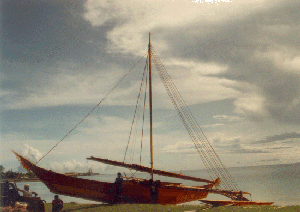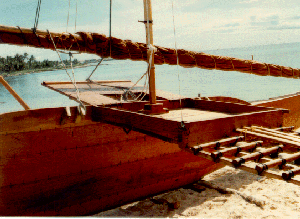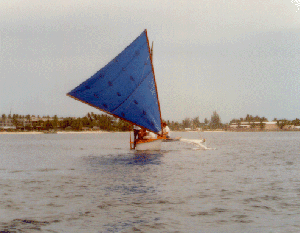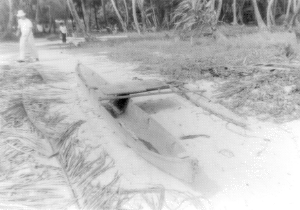

|
Essays on the Marshallese Past
Marshallese Canoes |
The canoes could reach up to 100 feet in overall length and were capable of transporting up to 40 people. There are considered three specific types of the outrigger canoes in the
The
The
The
Traditionally, within these three types of canoes, there are five recognised designs, the main difference of which is the bottom the profile of the main hull (
The canoes were made entirely from locally available materials, the main requirement being

Top:Canoe Building in Progress. The Aelon Kein, the R.M.I. entry to the 6th Pacific Arts Festival 1992. Bottom: Detail of the outrigger platform.


A Marshallese tipnol under sail in Majuro Lagoon.
Given that every family unit had at least one medium-sized canoe, along with a number of small paddling canoes, the wood resources needed for canoe construction and maintenance were planted and tended. Knowledge of traditional canoe construction, though formally held by certain families, was wide-spread throughout all atolls of the
Today, the

A make-shift canoe made from a
| select from the following... | ||||||
| |
||||||
|
Digital Micronesia-An
Electronic
Library & Archive
is provided free of charge
as an advertising-free
information service
for the world community. It is being maintained by Dirk
HR Spennemann, Associate
Professor in Cultural
Heritage Management, Institute of Land, Water and Society and School
of Environmental & Information Sciences, Charles
Sturt University,
Albury, Australia. The server
space and technical support are provided by Charles
Sturt University as part of its commitment
to regional engagement. Environmental
SciencesInformation
Sciences
|
||||||